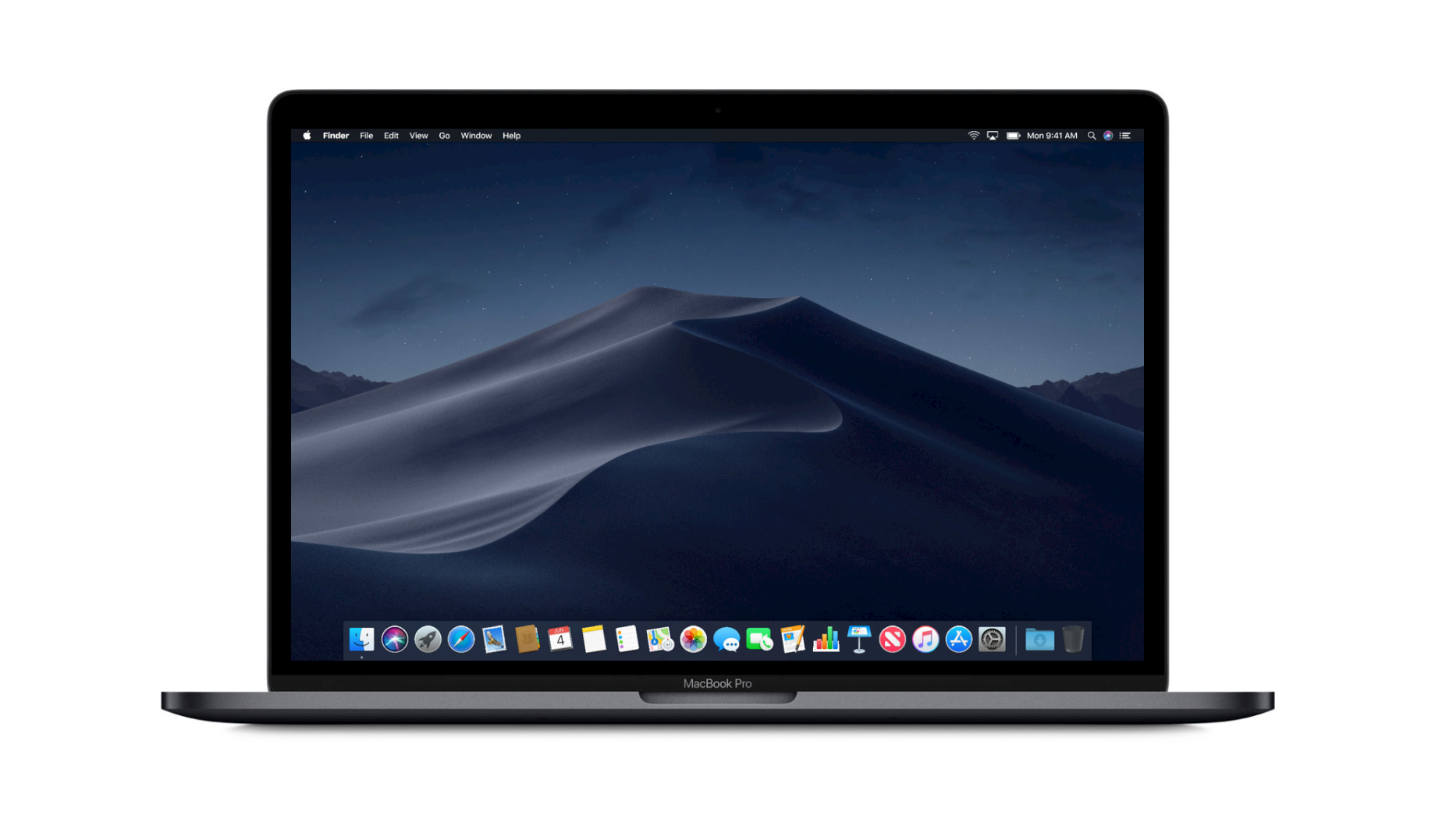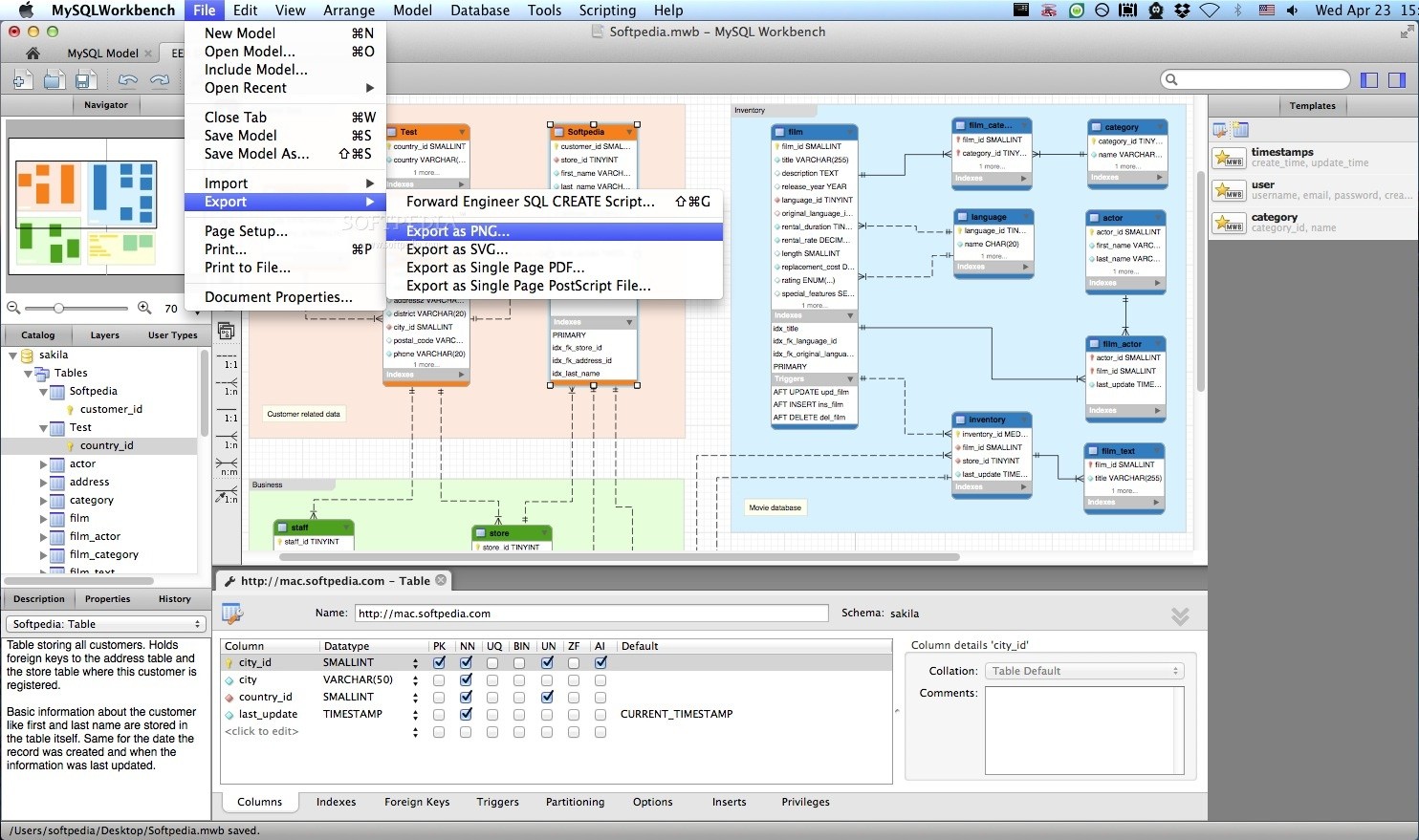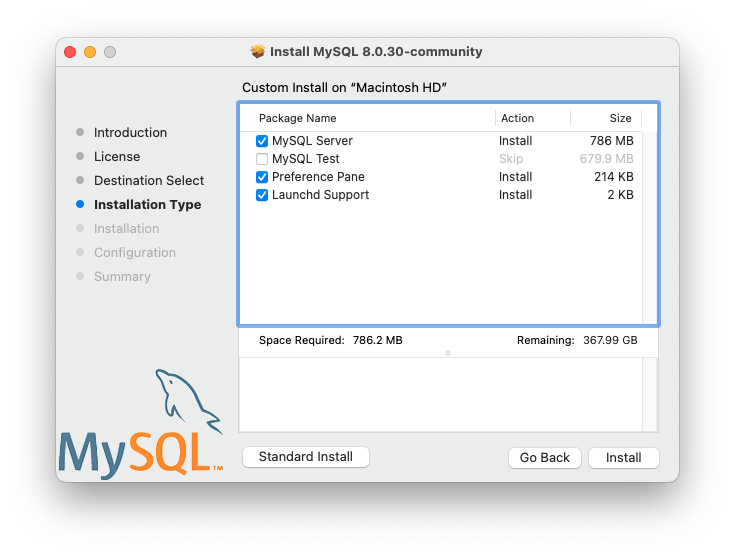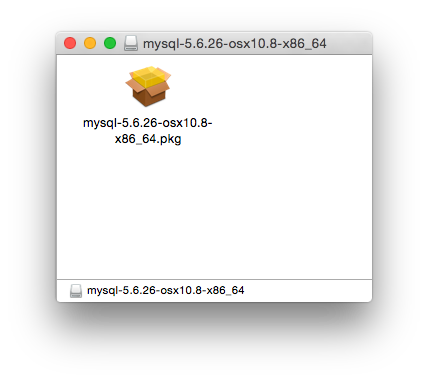How to install MySQL server on Mac OS X
Hi fellow tech friends!I'm Carlie, a single mum to two children, and I am teaching myself all things tech and programming from scratch, having had no previou. To install MySQL Workbench on macOS, download the file. Double-click the downloaded file to open the installation window shown in the figure that follows. Figure 2.1 MySQL Workbench macOS Installation Window. Drag the MySQL Workbench icon onto the Applications icon as instructed. MySQL Workbench is now installed. Mar 06, 2021 To download MySQL in Mac, follow the following steps. Step 1: The first thing you need to do is open your browser and then type ‘mysql.com.’. This will open the MySQL page. Step 2: After opening the MySQL page, click on the ‘Download’ option located on the navbar. After opening the download page, scroll down and select ‘MySQL. In this tutorial, I am going to explain how to download and install MySQL on Mac OS X in a few easy steps. Download MySQL for OS X. Unpack downloaded.dmg file. Install MySQL from downloaded file. Install and setup auto start package for MySQL on OS X. Connect to installed MySQL server.
Mac OS X has a great design and a lot of tasks are really easy to do. Unfortunately if you want to have MySQL server installed on your Mac this is not always as simple as everything else.


But wait do I need MySQL server?
In many cases you do not. If this is going to be the only computer on which you will have your sales information, you are planning to have only a few operations every day, or you will connect to other computers using IncoCloud, then no, you can use SQLite and keep things simple.
But if you have more than one computer in the office/shop/restaurant connected together – one or more front office computers or tablets and one or more back office computers all in a single location, for example, or you expect many operations made every day, then you need MySQL server to handle the big load.
Important!IncoPOS – our Point of Sale system for macOS can now download, install and configure MySQL server for you. This happens from the built-in wizard when IncoPOS is started for the first time. You can download IncoPOS from here.
The first step is to download MySQL server. Go to the MySQL web site and select the version that matches your version of Mac OS. Select the DMG archive version. After the DMG file finishes downloading click on it to open. Then open the installer inside and follow the installation steps.Warning! Because Oracle has changed the MySQL installer and the default parameters of the MySQL server in newer versions the following steps may no longer work. These steps were tested with MySQL server version 5.5.48 for Mac OS 10.9 (which should work on newer versions too). Please download and install version 5.5.48 to make sure that all the steps will work correctly. If for some reason the installer is no longer available on the MySQL web site you can download it from here.
After the installation has finished, open the System Preferences and you should see the MySQL icon. Click on it to open the MySQL server preferences. Now press the Start MySQL server button so MySQL would actually start working. Make sure to leave the checkbox “Automatically Start MySQL Server on Startup”/female-on-internet-during-travel-526604826-5a81066304d1cf00378d87a9-5c2fe40146e0fb0001229e96.jpg) so you won’t have to do that again.
so you won’t have to do that again.Now comes the tricky part. By default MySQL server installs without password and does not restrict access to the information on it. This is not a great idea for us because your information is sensitive and we don’t want the whole world to be able to access it.
For the next part you need to open the Terminal app.
- To open the Terminal app click on the magnifying glass icon on the top right on your mac. This will open Spotlight.
- Type terminal in the search field.
- When the Terminal app appears in the list, select it by pressing Enter.
In the Terminal screen, type these commands and press Enter after each one of them:
cd /usr/local/mysql
This will change the current directory to the one where MySQL server is installed
sudo bin/mysql_secure_installation
This command will ask for your computer password. While typing it no characters will be displayed which is normal so don’t worry. Press Enter when finished. This will start a script which will ask you several questions and then reconfigure MySQL.
Set root password? [Y/n]
Select Y and press Enter. After that enter a password for MySQL and press Enter. Re-enter the password and press Enter again. This will be the password that IncoPOS will need when connecting to MySQL server.
How To Download Mysql For Windows 10
Remove anonymous users? [Y/n]Select Y and press Enter. You don’t need anyone but you or someone you told your password to touch your data.
Disallow root login remotely? [Y/n]
Here you have to decide. If you have more than one computer that will be using this data then answer n. If this information will be accessed only from this computer then select Y. In all cases this can later be changed by using the same commands.
Remove test database and access to it? [Y/n]
Select Y and press Enter. You don’t need that test database so it is safe to remove it.
Reload privilege tables now? [Y/n]
Select Y and press Enter. This will make the changes you did effective now.
This is it! Now you have MySQL installed and secured on your Mac.
- 2.4.1 General Notes on Installing MySQL on macOS
- 2.4.2 Installing MySQL on macOS Using Native Packages
- 2.4.3 Installing and Using the MySQL Launch Daemon
- 2.4.4 Installing and Using the MySQL Preference Pane
Install Mysql In Mac
For a list of macOS versions that the MySQL server supports, see https://www.mysql.com/support/supportedplatforms/database.html.
How To Download Mysql For Mac Download
MySQL for macOS is available in a number of different forms:


Native Package Installer, which uses the native macOS installer (DMG) to walk you through the installation of MySQL. For more information, see Section 2.4.2, “Installing MySQL on macOS Using Native Packages”. You can use the package installer with macOS. The user you use to perform the installation must have administrator privileges.
Compressed TAR archive, which uses a file packaged using the Unix tar and gzip commands. To use this method, you need to open a Terminal window. You do not need administrator privileges using this method; you can install the MySQL server anywhere using this method. For more information on using this method, you can use the generic instructions for using a tarball, Section 2.2, “Installing MySQL on Unix/Linux Using Generic Binaries”.
In addition to the core installation, the Package Installer also includes Section 2.4.3, “Installing and Using the MySQL Launch Daemon” and Section 2.4.4, “Installing and Using the MySQL Preference Pane” to simplify the management of your installation.
For additional information on using MySQL on macOS, see Section 2.4.1, “General Notes on Installing MySQL on macOS”.